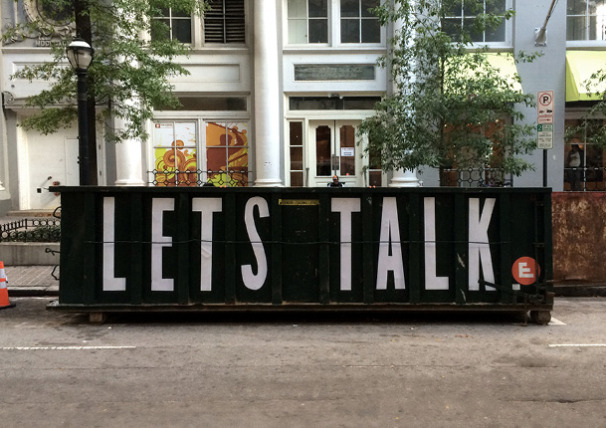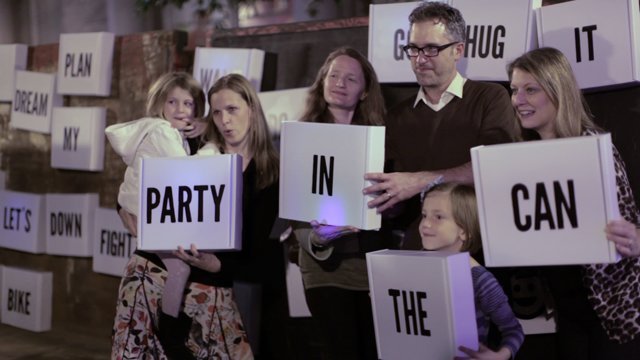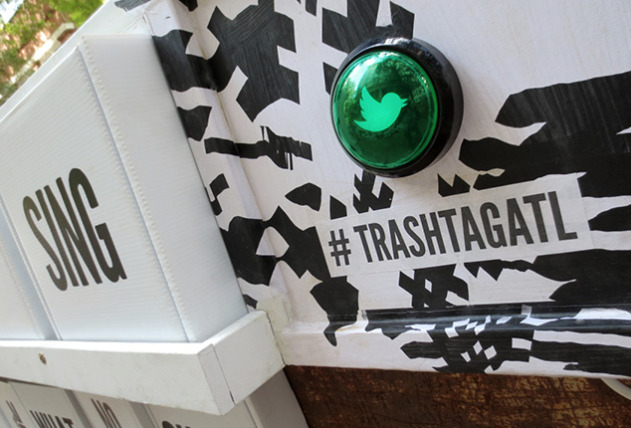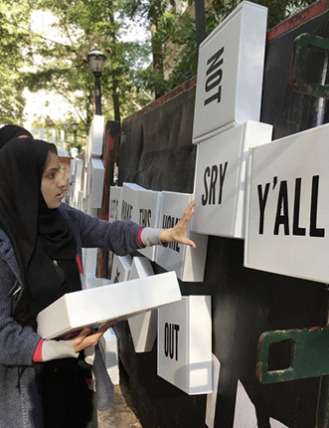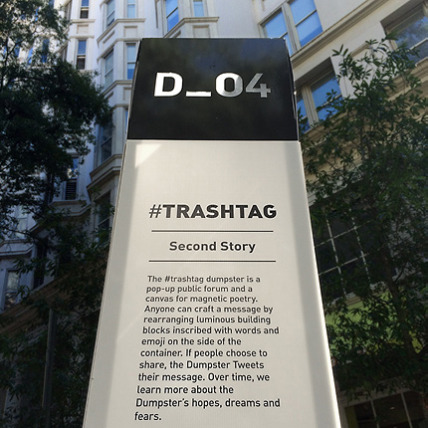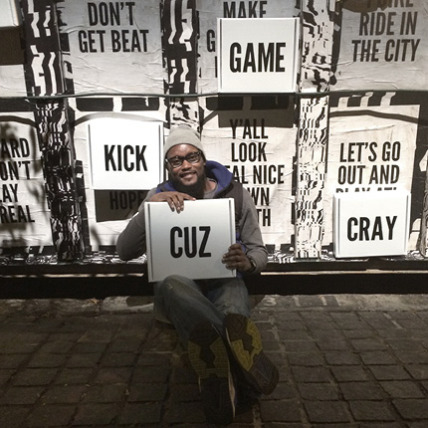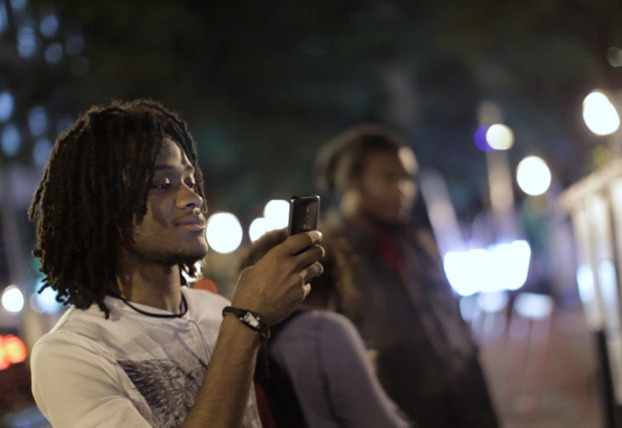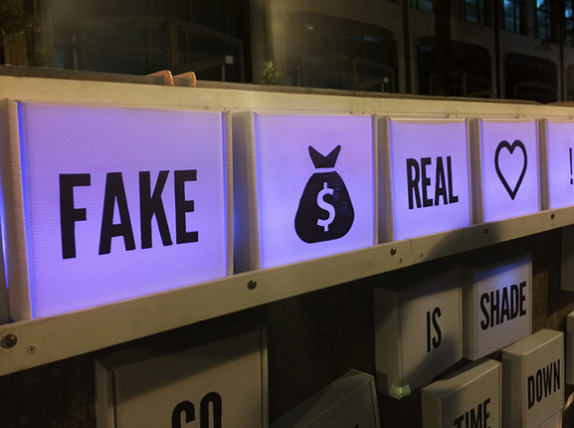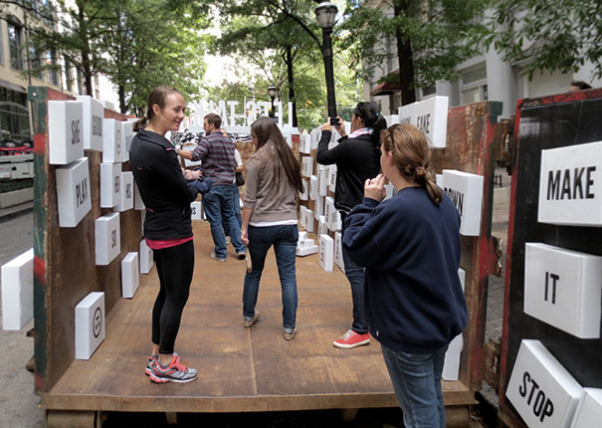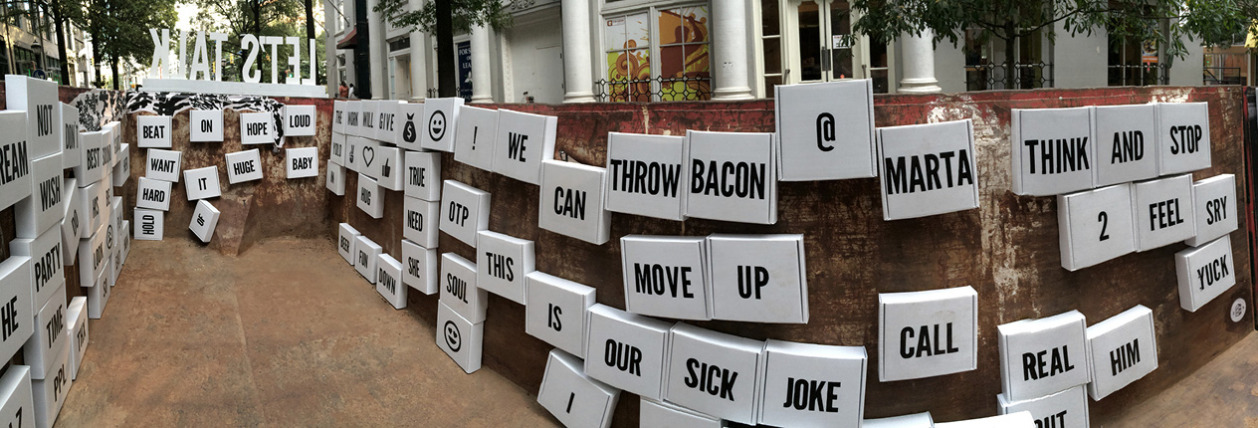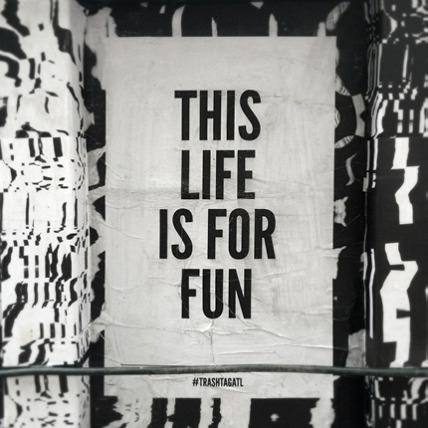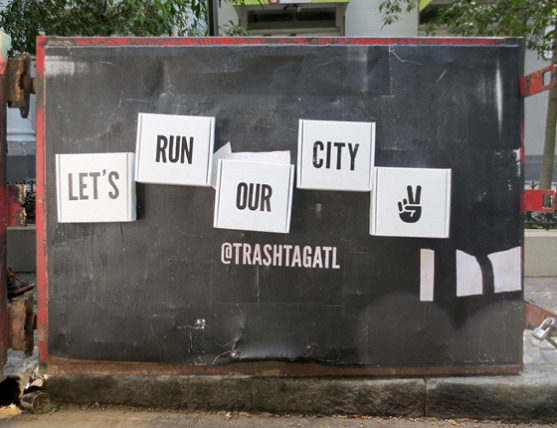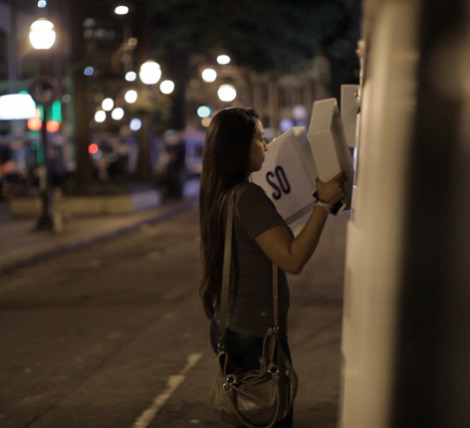#Trashtag
For a week in October 2014, Second Story partnered with curators at the Goat Farm Arts Center to transform a Dumpster into public art. The installation lured passersby into an ongoing narrative about the disposability of modern messaging and explored new manifestations for social media.
The way we broadcast messages has changed. In quiet commune with our personal devices, billions of data bits spring forth from our fingertips, quietly cross the vast “social media landscape,” and find their way to our followers. Scrolling through an endless sea of ephemeral status posts, we start to wonder if our compass is steering us toward social isolation.
For one week in downtown Atlanta, Second Story explored a radically different interface for social media: a Dumpster filled with more than 100 illuminated blocks inscribed with words and emoji. The installation lived on Broad Street, a historic strip trafficked by students, office workers, and the impoverished. Here, anyone could use the pop-up forum to craft a personal message and share it with the public.
#Trashtag contributed both a physical and a digital spectacle to Elevate 2014, a weeklong series of city-sponsored installations and performances that activated underused streets through artistic experiences worth exploring. The event’s theme, “social city,” inspired the studio to create a space to post on social media by way of public performance.
The Dumpster not only collected messages, it amplified them. People placed their words on a physical input box and pressed an oversized button to tweet their message on the Dumpster’s personal account: @TrashTagATL.
#Trashtag created a vibrant social media landscape rooted in an unlikely space. Strangers laughed together as they discovered hidden phrases on the walls of words, and conversations flowed and shifted around the Dumpster, itself a symbol of change and renewal.
